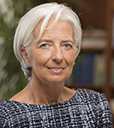Versions in: عربي (Arabic), 中文 (Chinese), Français (French), 日本語 (Japanese), Português (Portuguese), Русский (Russian), and Español (Spanish)
Growth is essential for improving the lives of people in low-income countries, and it should benefit all parts of society.
Traveling through Africa in the last few days, I have been amazed by the vitality I have witnessed: business startups investing in the future, new infrastructure under construction, and a growing middle class. Many Africans are now making a better living and fewer are suffering from poverty. My current host, Uganda, for example, has more than halved its absolute poverty rate to about 35 percent from close to 90 percent in 1990.
But we have also seen a flip side. Poverty, of course, but inequality as well remain stubbornly high in most developing countries, including in Africa, and too often success is not shared by all. Continue reading
Filed under: Economic research, growth, IMF, Inequality, International Monetary Fund, Reform | Tagged: Africa, China, Christine Lagarde, economic reform, Ethiopia, IMF, iMFdirect blog, inclusive growth, inequality, inflation, infrastructure development, International Monetary Fund, Malawi, middle class, Myanmar, poverty reduction, Sub-Saharan Africa, Uganda | Leave a comment »











 By
By  By
By 



